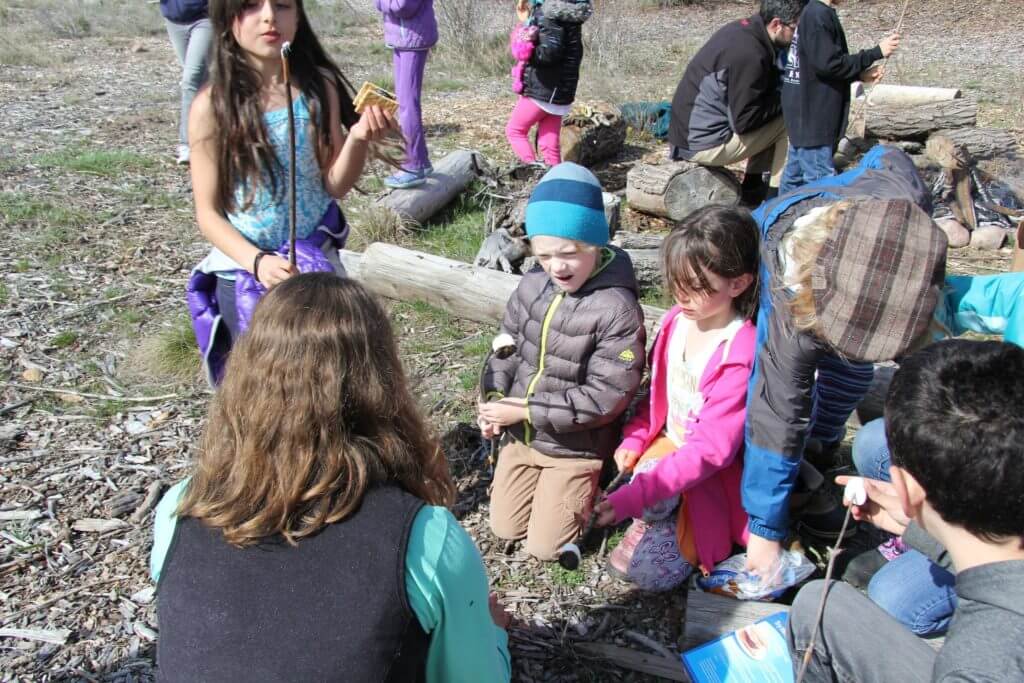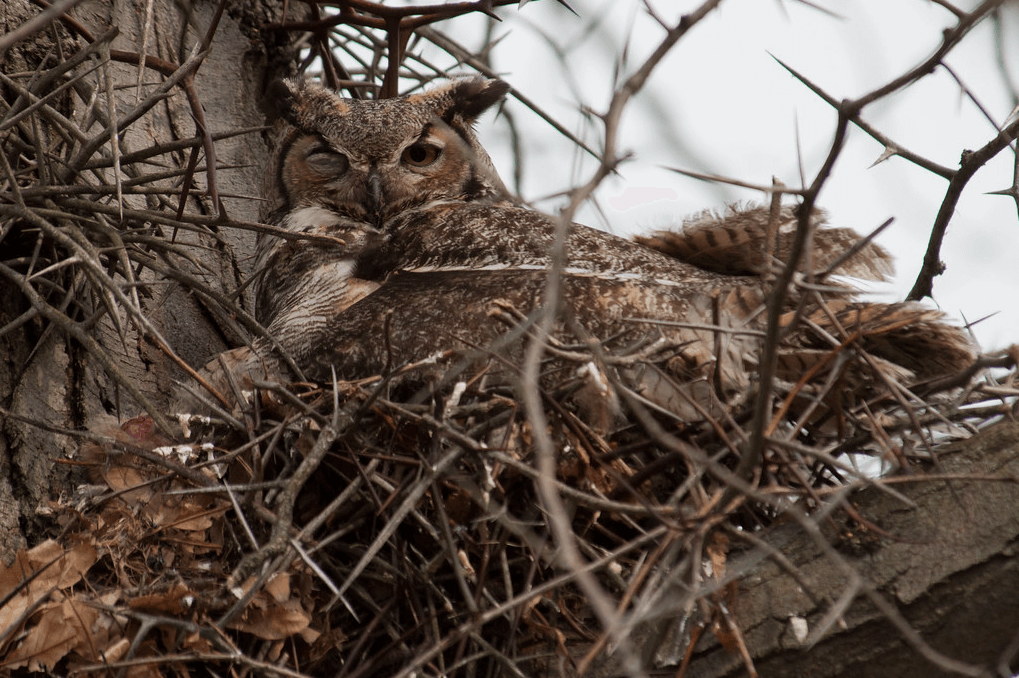By Bailey Zook, Teaching Naturalist
This year I have had the fantastic pleasure of working alongside Stephanie Laporte Potts, MNHC’s Youth Programs Coordinator, as we led the 2016-2017 homeschool group through various naturalist topics. A naturalist can most easily be described as a combination of three things: a writer, an artist, and a scientist. For the past year we have been focusing on naturalists as scientists and have done many experiments and exploratory lessons covering everything from birds and flight to mammals and adaptation.
For our final lesson we took the students into the field for a hands-on lesson on fire ecology (one of my favorite topics). On a chilly, damp Friday morning, we found ourselves at MNHC’s Native Plant Garden at Fort Missoula, beginning our lesson with a discussion about the fire triangle and important fire safety guidelines. Stephanie began to construct a fire to demonstrate the need for oxygen, fuel, and heat, and the group at large moved into a conversation about forest ecology and fire dependence. We discussed how fire helps to keep certain ecosystems and species healthy by reducing undergrowth, decreasing overall forest density, and making room for a new generation of trees. With a small fire now burning merrily in front of us, we next talked about ways to contain wildfires, including rake lines, pre-burning fire boundaries, reducing available ground fuels, and using water and fire retardants to slow wildfires down once they’ve begun.
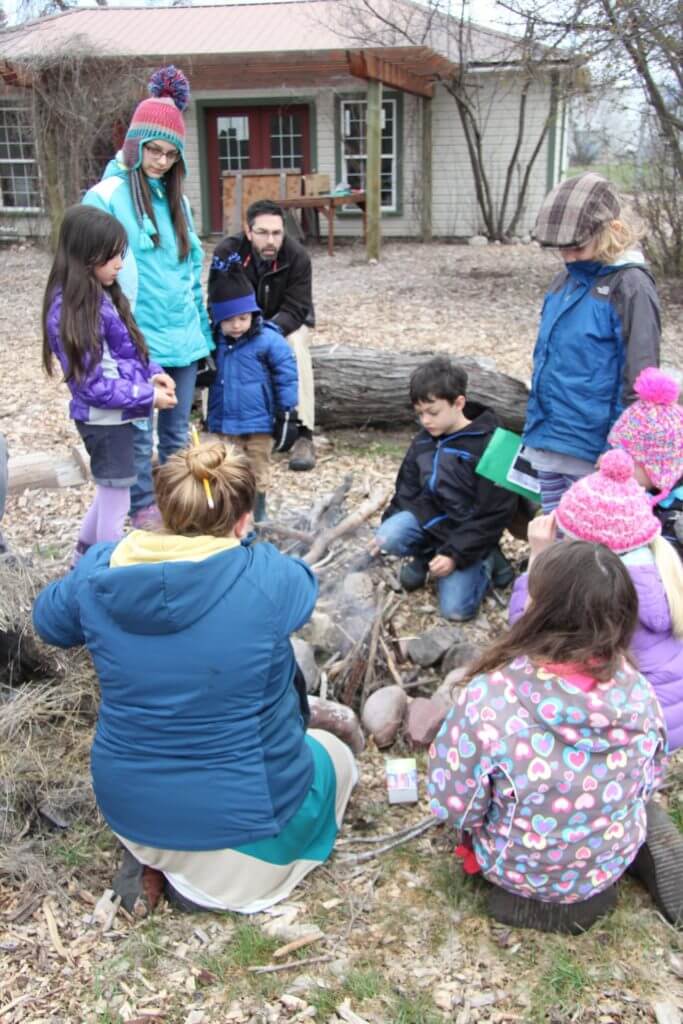
Leaving Stephanie to tend to the fire, the students and I and headed over to a nearby field, where we talked about the importance of fire ecology research in understanding how fires work and how we can best prescribe them for ecosystems that are fire-dependent. Primed with all this knowledge, the kids were ready for the hands-on part of the lesson: practicing field research!
I split them into four groups and gave each group a hoola-hoop, compass, ruler, clipboard, and randomized locations to survey. Each group placed their hoop on the ground, and I asked them to sketch what they found inside their hoops, estimate the percentage of brown, green, and dirt that could be seen, note the height of the fuel load, and decide if their location would burn. Then I gave each group a second location to survey before we all came back together. The students were so excited to hear how the other groups’ survey sites compared to theirs, seeing firsthand the importance of collecting multiple data sets and collaborating with others as we put together a “burn picture” for the entire field. The kids determined that while a fire might burn the field, it would not burn very hot or move very quickly without wind to push it along.
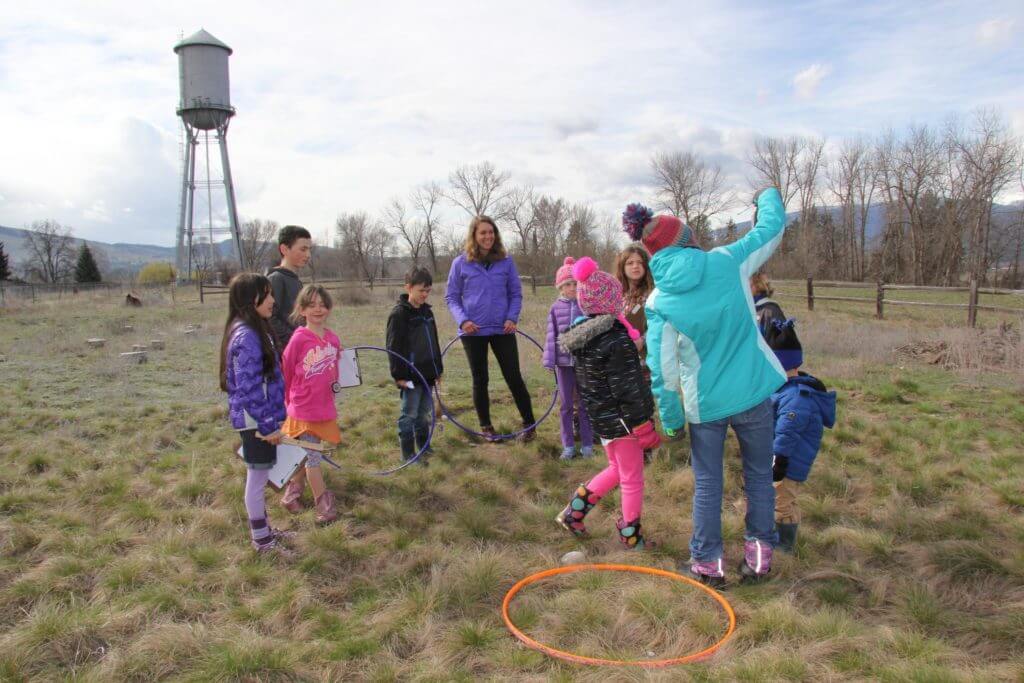
For the last part of the lesson we moved to the table where Stephanie had set up an experiment from our Fireworks Traveling Trunk (click here for information about our Traveling Trunks Program). The students used matchsticks to represent trees and set up “forests” on small pegboards. Once the forests were designed, some were set flat on the table while others were propped up like “hills.” The students were captivated as Stephanie lit the matchstick forests and fire consumed them at different rates depending on slope, wind direction, and forest density. We followed this experiment with a fantastic discussion about how fire moves through forests with different topography and densities.
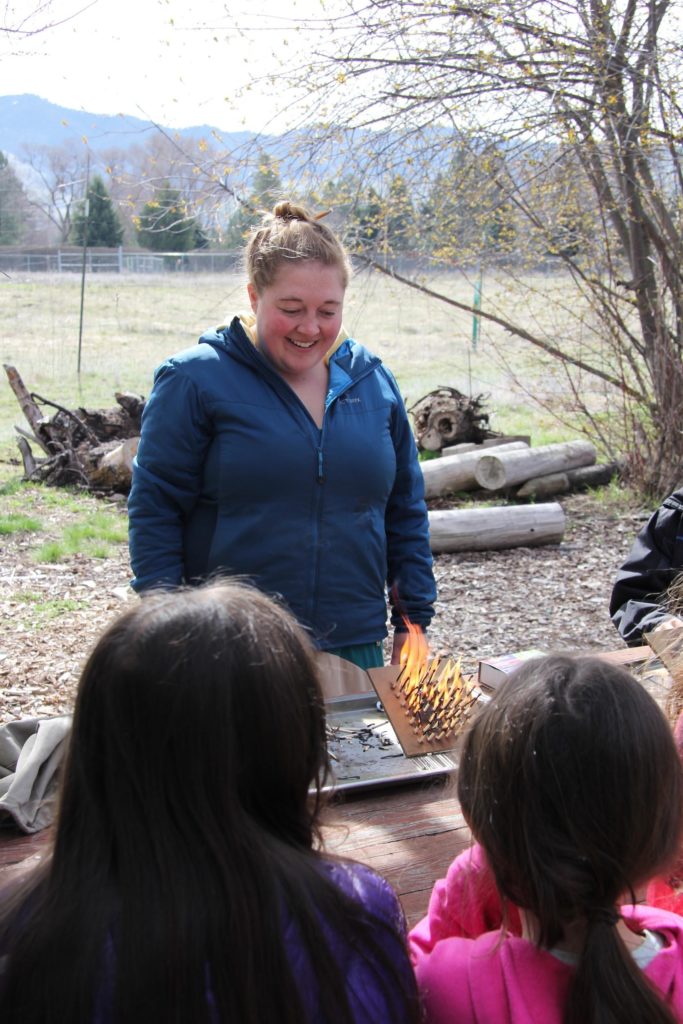
We ended the morning around the fire, wrapping up our year together with some delicious s’mores. Though the formal lessons had finished, the students continued their exploration by testing the effects of fire intensity on their marshmallows. It was an exciting, beautiful morning filled with wonderful students and we can hardly wait for next year to see them all again!
